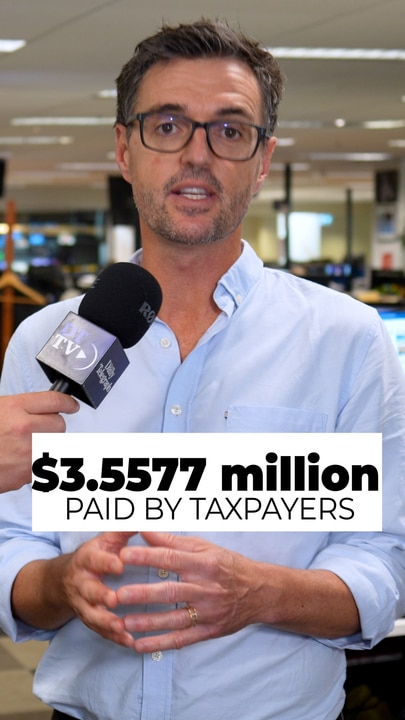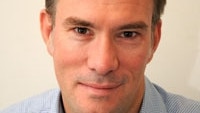Australians fuming over big change coming to air-con, house power control
Australians are fuming over a controversial Big Brother move that could see households lose total control over powering items - including aircons - in their homes. Have your say and vote in our poll.

National
Don't miss out on the headlines from National. Followed categories will be added to My News.
EXCLUSIVE
Households will soon lose total control of power to their home, with air-conditioner thermostats remotely dialled up and hot-water units dialled down as authorities increasingly intervene to cut demand when the weather is unexpectedly hot and supply is unreliable.
Monash University associate professor Roger Dargaville made the forecasts after the Australian Energy Market Operator revealed it paid industrial power users more than $3.5 million in compensation for agreeing to cut their consumption as Sydney confronted blackouts last week.
The prospect of the lights going out loomed because of a combination of unseasonal near-40C temperatures, outages at coal-fired power stations and low generation from wind farms.
Dr Dargaville, who specialises in “large-scale energy system transition optimisation”, said authorities would have to expand their options to deal with more frequent instances of surprisingly high demand and low supply.
Options were likely to include the installation of “widgets” on aircons that allow third parties to engage “economy mode” to reduce power use in peak periods.


Remote control of hot-water units and pool pumps would also become commonplace to cut consumption, he said. Electronic vehicle charging was likely to be targeted as well.
The concept has left Aussies fuming, a News Corp reader poll has revealed.
More than 6300 people responded to a poll asking: “Should authorities be allowed to take control of power usage in your household?”
More than 94 per cent of respondents answered “No”.
Reducing usage at peak times through so-called “demand response” was far cheaper than building more capacity or energy storage, Dr Dargaville argued.
And consumers should not be alarmed by such moves, he said.
“There will be a period of adjustment but it will be become normalised,” Dr Dargaville told this masthead.
“You’ll still have the same services available to you. These will be automatic and in the background.
“If the energy system was less volatile you wouldn’t need to use it,” he added, but that was unrealistic given more extreme weather, reduced reliability of coal-fired power and more generation from variable sources such as wind and solar.
Companies including AGL and Ausgrid have previously run demand-response trials, but none that were widespread. The trials have typically involved financial incentives to participants.
Dr Dargaville laid out his vision after AEMO CEO Daniel Westerman told an energy planning and regulation Senate committee hearing that the market operator spent $3,557,700 on reducing demand to increase emergency reserves in NSW on Wednesday November 27 as a supply shortage took shape.
Records appear to show that this was the first time AEMO had paid to cut power usage in NSW since the crisis of June 2022, when it spent $75m over three days.
Last financial year, AEMO outlaid a total of $4m on demand reduction – in Victoria and SA.
Mr Westerman indicated AEMO did not end up having to reduce Wednesday’s demand by as much as first expected.
But, in anticipation of a greater shortfall than eventuated, AEMO had “pre-activated” extra reserves.
Mr Westerman said the purchased electricity use reduction came from “virtual power plants”, which were an “aggregation of … smaller demand.” He did not name the providers of that demand.
Mr Westerman did say the extra reserves were not from the state’s largest power consumer, Tomago.
“It wasn’t the aluminium smelter,” Mr Westerman said in response to questions from Queensland National Party senator Matt Canavan.
“Tomago was pre-activated and ready and available, but not used during the time,” Mr Westerman said.
“And what we observed was that Tomago withdrew themselves out of the market.”
It is unclear why Tomago reduced its demand. This masthead sought an explanation from the company.
Power users that are “pre-activated” and on notice to reduce their demand get smaller payments from AEMO than those that actually throttle back consumption.
Earlier during the hearing Senator Canavan described the power shortage in Sydney last week as a “fiasco”.

He queried why three coal-fired generators were allowed to have planned outages in the last week before summer.
The future timing of scheduled maintenance would be reconsidered, another regulator said.
Mr Canavan’s questioning also revealed AEMO’s official road map for the energy system is modelled on a “shadow carbon price” of $256 a tonne in 2050 to reach net zero emissions.
The “value of emissions reductions” (VER) at that time would be more than $420/tonne.
The shadow carbon price is not a cost paid by emitters. However, it and the VER do make renewable energy developments look more attractive as investments, compared to fossil-fuel power projects.





